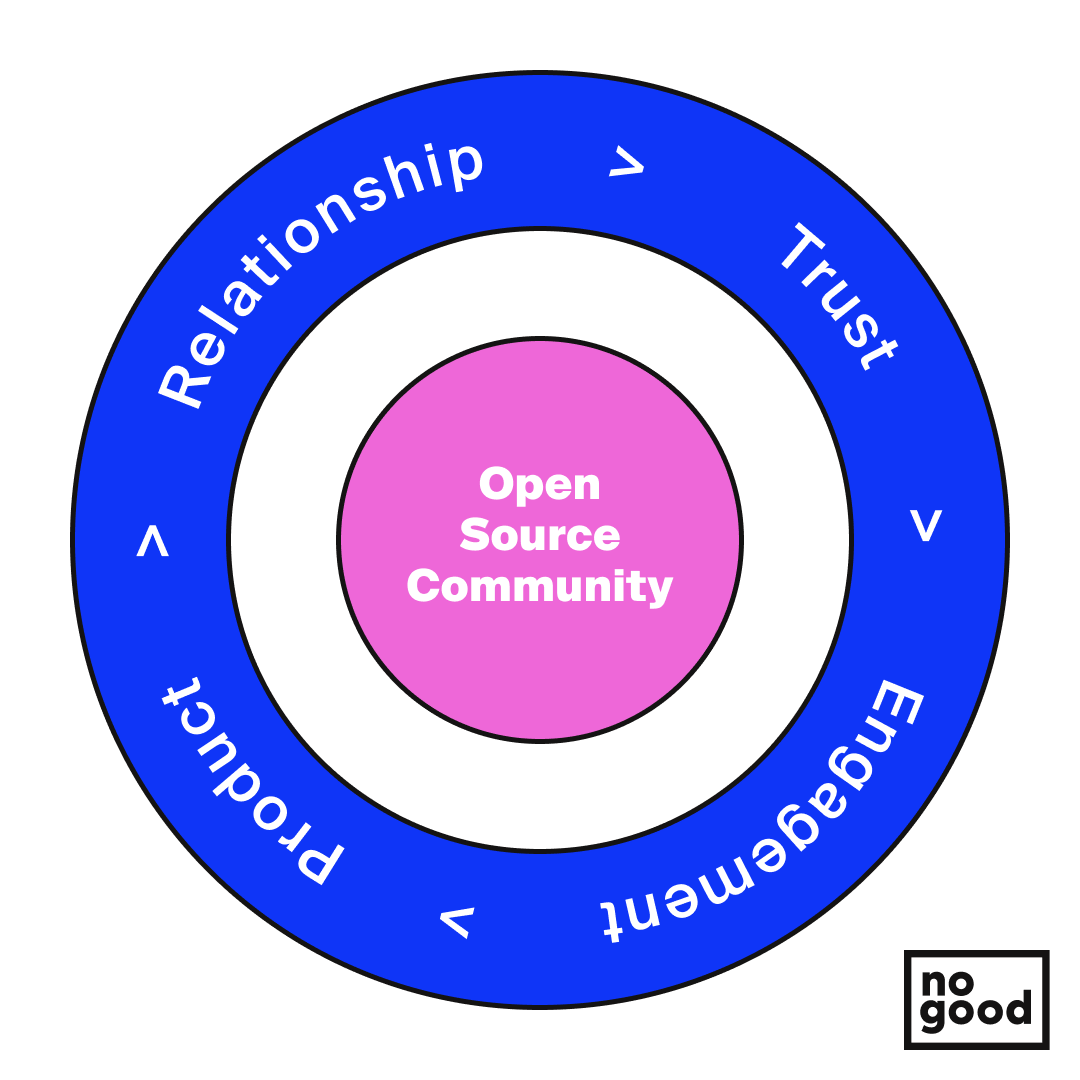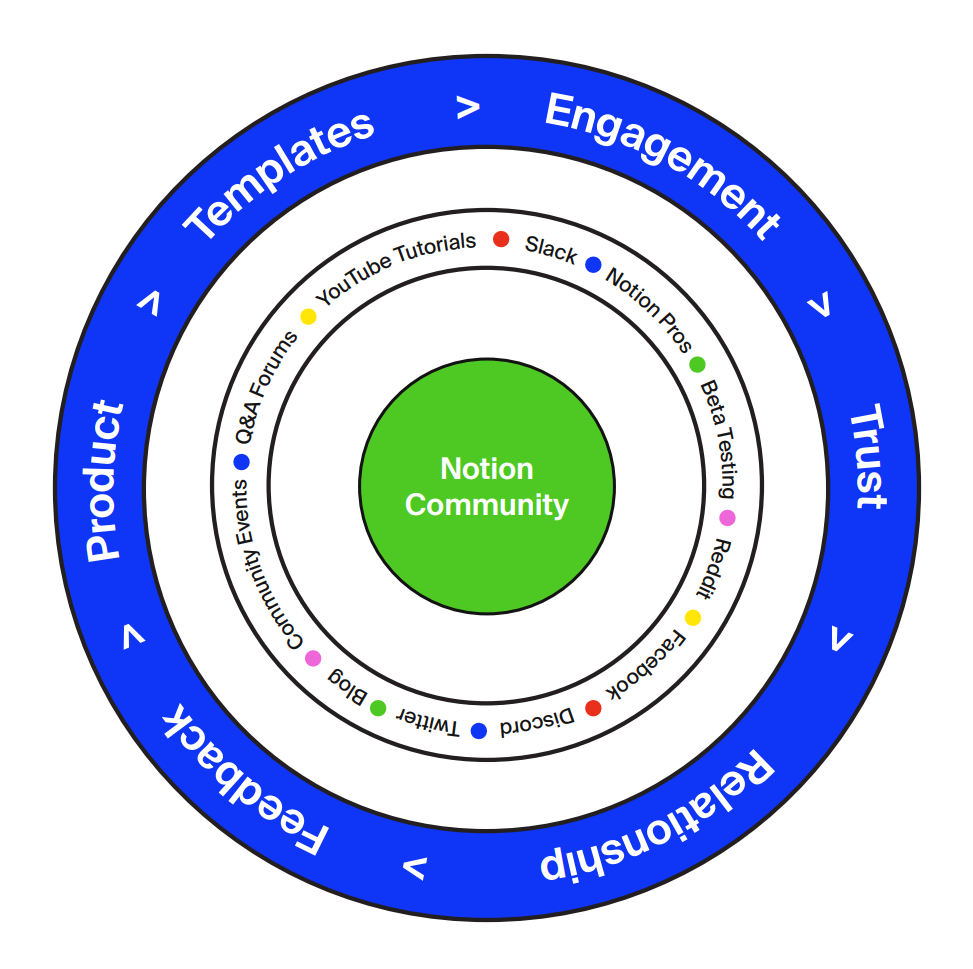Introducing: Open source. Everyone’s best companion for developing community-led growth in Web3. Open source community growth builds allow users to see what your product does, and the freedom to change how digital products or service works, fortify security or even create new features. Encouraging community contributions to your projects, whether traditional or on Web3, creates opportunities for faster iterations, higher engagement, and one heck of a fantastic growth loop.
Since the commercialization of software in the 90s, most applications that we interact with on a daily basis are closed – meaning, we can’t change them. The functionality is set how the programmer or company wants it to function — UI, features, and performance, all can’t be changed since the code isn’t publicly available, and if it is, it’s likely that the code is obfuscated. But what if developers left that code open, publicly available, allowing other developers to build upon their ideas, iterate faster, and leverage it as a tool to create the Web3 equivalent of UGC?
We’ve discussed community-led growth loops in the past, creating the organic compounding cycle of growth as illustrated below:
Open source community growth as a strategy, however, turn this loop on its head a bit — altering the sequencing of the loop to take a product first approach which cycles back on itself, as seen below:
- Product
- Trust
- Relationship
- Engagement
- Product

As we’ve observed previously with Web3, product, transparency, and trust are some of the key metrics to success in building a new project.
For this particular process, by keeping the product open, there develops an organic flow of building trust with your audience through transparency. Once this trust is formed, there is a natural extension into community engagement, which extends directly to community participation in the development process, which flows back into product — closing the loop.
Let’s explore some of the greatest examples of community-led growth through open source projects, how they got there, and how this might benefit your Web3 build.
Wikipedia Open Source Community Growth:
As a guide for utilizing open source as a means for community-led growth — Wikipedia is a masterclass from which to learn.
It’s not often recognized, but Wikipedia is the godfather of UGC — relying almost entirely on users to update their proprietary tool for indexing information (Wikis — ever heard of them?).
By creating an open source platform for information, users were encouraged by content loops during the early stages of the platform’s community-led development which turned users into contributors (UGC much) as the first blocks of information fell into place. Due to the collaborative nature of the platform, users who weren’t immediately successful in finding the information they sought, often turned their attention to finding this information elsewhere — closing the loop on the site by becoming contributors once the information was acquired.
This built the site from what would otherwise just be another indexing site to one of immense value and importance to almost every person on the planet — if you have an internet connection, you likely resource information from Wikipedia on a weekly basis, if not more frequently.
By providing users a simple tool for indexing information, and encouraging user contributions, Wikipedia was able to accomplish the following:
- Donation-based with an average donation of $15, which is impressive considering they raise ~$157M per year.
- Ranked as one of the top 10 trafficked sites on the internet.
- 55 million articles written.
- Written in over 300 languages
- Over 29 billion words have been recorded on the site
Compare the above metrics to the relatively modest size of the team, which is currently hovering around 450 employees and contractors and it’s an absolute marvel that the site is as massive as it is — all thanks to its users generated content by virtue of being open source.
If we were to look at the strategy that Wikipedia employed in order to accomplish this they:
- Product: Developed Wikipedia as a platform for information
- Trust: By not controlling the recording of information, Wikipedia established itself as a source that is free of bias.
- Relationship: Users feel validated and as though they have a sense of ownership in the project.
- Engagement: Wikipedia becomes a trusted source for information with articles becoming shared more frequently than source articles (to your professor’s dismay).
- Product: Wikipedia further develops as a platform for information.
As we approach our own projects — we can look at them through the lens of community lead growth and user contribution in order to assess what, if any, opportunities there are within the project for community interaction and contribution, and how to activate those individuals in the community.
This can significantly reduce the initial lift for projects that are particularly bootstrapped but have a dedicated community behind them, by shifting labor costs to the community — potentially in exchange for governance, or equity. Though, as we’ve learned from Wikipedia, if the project is compelling enough, users will be compelled to contribute and driven by the sense of community that participation lends them.
Uniswap Open Source Community Growth:
Uniswap has utilized similar tactics for community-led growth in order to build a robust community around their Ethereum tool-set.
Starting as a defi exchange, Uniswap found early success through the decentralized nature of their exchange and the fact that they were open source, as compared to competitors who ran exchanges that were run by centralized companies (TL;DR a communal digital stock market).
Similar to Wikipedia encouraging the community to build the repository of knowledge on their site, Uniswap created a tool-set for developers within the Web3 community to build on top of their protocol — the results of which were remarkable.
What Uniswap refers to as their “ecosystem” is, at its essence, a library of defi apps that have been generated either solely by users in the community, or in tandem with the developers at Uniswap.
This is incredibly illustrative of the sentiment in open source that, “Users should be treated as co-developers.” A sentiment that not only leads projects with the intention of inclusivity, but also empowers communities to feel ownership in the project, and encourages advocacy within budding ecosystems.
This mechanism in the case of Uniswap creates a fairly admirable community growth loop in that, those joining the community are encouraged to build communities of their own, which then become a part of the original community — the ecosystem is a great way to describe the process and what is being built.
As we look to apply the loop here we can observe:
- Product: Create a set of tools for Web3 development.
- Trust: Establish trust as an open source defi exchange.
- Relationship: Users utilize the exchange while also using the tools for their own development purposes.
- Engagement: Users build conversations around their projects which are organically tied back to Uniswap as it was the foundational source of truth.
- Product: Users add new dapps + tools to the Uniswap ecosystem.
Nintendo Open Source Community Growth:
Now that we’ve explored how communities can develop as an extension of a product being open source, both on the old web and in Web3, we can take a look at the perils of closed software and psychological reactance.
With Nintendo being possibly one of the most well-known companies in the world, and Mario being one of the most recognizable characters ever created, it’s unsurprising that Nintendo has a preference for protecting their mustachioed plumber.
Similar to how Disney’s Mickey Mouse is one of the most frequently pirated and replicated pieces of intellectual property in the world — to the extent that copyright laws tend to be updated each time the mouse is up for public domain inclusion. Mario has become one of the most hacked and modded games in the history of video games — with the first ROM hack being created in 2007.
But what does this have to do with open source community growth? Glad you asked. Everything.
For cultural context, 2007 was a period when many Mario fans desperately wanted a return to form for the 2D platform genre that Nintendo had built the Mario legacy upon — though Nintendo, as Nintendo does, only wanted to do Nintendo things.
In response, the highly dedicated Mario community decided to break Mario and stole the source code to make their own Mario games — the first being titled, Asshole Mario.
This signaled a major culture shift for gaming communities as they had created their own open source tools for developing Mario games.
What transpired in the coming years, was a massive community development around the world of what became to be known as Kaizo Mario. The video uploaded showcasing the first level of Asshole Mario currently sits with 5.48M views, with numerous creators, players, and others who sprung up as a result of the creation of the game to develop a community specific to Kaizo Mario — one that wouldn’t have been realized without making the code accessible and free.
As we speak about psychological reactance (the natural urge to want to do things you’re told not to) and the effect on community building, this is a fairly substantial illustration of not only the futility of trying to resist a group’s desire for change but also the power of these communities to affect change.
It may have taken until 2015, but Nintendo did ultimately release Mario Maker — an officially licensed game that allows users to build their own Mario levels. The title sold over 4 million copies and was given a sequel in 2019 which itself has sold over 7 million copies with millions of dedicated players and fans congregating on Twitch and Youtube every day to share the levels they’ve made, play other people’s levels, or just be entertained.
As we apply the loop here, there’s a bit of a deviation — though fundamentally the process creates similar outcomes:
- Product: Players create Mario ROM Hacks.
- Trust: Nintendo releases Mario Maker as an acknowledgment of the community.
- Relationship: Players feel validated by this acknowledgment.
- Engagement: Players migrate to Mario Maker with a downward trend in ROM Hacks.
- Content: UGC of Mario Maker dominates social video platforms.
- Product: Nintendo regularly updates products to continue acknowledging the community.
This may actually be the most important lesson for Web3 in making the case for open source, in that — people will do whatever they want, especially if told not to.
In the case of Nintendo, what we can observe is that even if a product is not open source, there are still learnings and value that can be gleaned from the community as it relates to community-led growth. In this particular case, they harness community-led innovations to inform their internal product decisions which moved external communities who were co-opting their IP into internal, highly engaged, communities who were advocating for their products.
Additionally, as a mechanism for community-led growth, Nintendo was able to leverage a project that was open source, but unofficial, into one of their largest community-driven products by listening to their audience, participating in conversations, and adapting their strategy to cater to the needs of their community.
How the Other Side Lives:
There’s a great deal of evidence to support the push that Web3 is providing for making all software open source — though there is still a substantial market presence of existing closed source software and validation for that precedence.
In fact, some of our most beloved growth tools are closed source and we think that’s 100% okay, and we would do nothing to change that.
As we’ve previously covered, Notion is an incredible tool that has masterfully executed a community-led growth strategy while keeping its code closed.
Looking to Wikipedia as a comparison, what Notion excelled in doing was creating a tool that is iterative and adjustable to a point that it’s customizable to the extent that the community doesn’t have a need for manually iterating the product that exists.
Notion also actively promotes their community to share how they are building out their product for specific use cases in order to advocate for participation and growth on a community level while proactively gathering and implementing feedback.

In Closing:
In the landscape of Web3, a big lesson to be learned for community development is through social listening, social advocacy, and utilizing feedback loops to improve products and leverage the community to advocate for your projects. As you’re building a community, actively monitoring feedback and adjusting your strategy to reflect public sentiment is key to success.
What we can definitively say is that the value of open source as a mechanism for the community is validated by participation. It’s UGC, but if UGC was lines of code or a level in a snarky Mario game, or the OG UGC of updating a Wikipedia page. No matter the format, give people a voice and they’ll tell you what they want. Listen, and they’ll thank you. Include them, and they’ll help you.





